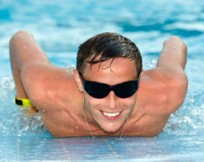Winterizing the pool is often done by a pool company that specializes in opening or closing pools. You can also attempt a DIY on it, but must take precautions to avoid any damage to pool equipment. You could always hire a company one year and look over their shoulder to be sure you have it right, or spend a few hours on Youtube!
Need swimming pool cartridge filters in Canada? Have a look or email us with the model you need. (info@spafilters.ca)
Some of the things to be aware of when closing a pool after the end of the swimming season in Canada are:
Balance the water chemistry
This should be done a week before closing to assure you start off on the right foot. That means a pH of 7.2-7.6, alkalinity of 80 – 120 ppm and calcium hardness of 180-220ppm. Shock the pool and monitor chlorine level over a few days until stable at the correct level.
Remove accessories
When the work begins, remove any loose fittings, ladders, toys, skimmer basket, pool cleaners and other items and store in a safe place for the winter.
Lower water level
Lower the water level in the pool a few inches to accommodate the solid cover (or even a foot or more when using a mesh cover).
Blow out the lines (after lowering water level below the skimmer or tile)
First drain all pumps, filters, heaters and automatic chlorine generating equipment via the drain plugs and blow out lines to avoid freezing of components.
Blowing out lines is done with compressed air tanks (usually low pressure compressed air under about 20 psi) to make sure there is no standing water in the lines that could freeze. This can also be done with a strong shop vac set to blow setting. There are also dedicated pool type blowers used just for this purpose. Most shop vac hoses will fit right into the pool hoses. Duct tape or a rag may be your best friend here. Air compressors can be found on kijiji second hand, and they are good for running tools and other equipment as well. After draining, clean out your pool cartridge filter or other filter type.
Blow air from the skimmer through the equipment and get all the water out and back into the pool, then plug the lines at the pool using expansion plugs. Some use antifreeze made for pools, but the best prevention is to make sure you get all the water out.
Seal off the water lines – There are differently sized plugs that are needed at the ends of the lines after you clean them out so that water or moisture does not get in.
Add winterizing chemicals – These chemicals come in a kit that makes sure you have everything you need. The pool closing kits that don’t have any chlorine are also good for above ground poools. Chemicals that remove phosphates from the water, or provide a slow release non-chlorine solution can help avoid algae blooms in the spring. It is important to balance the chemicals in the winter and not neglect the pool or it may cause staining or other damage. For inground pools, chlorine is used along with an algaecide and stain prevention chemicals. Always consult the manufacturers instructions for proper use of pool chemicals.
Use a pool cover– A good pool cover will help protect the pool over the winter, and provide safety from falling into the pool. Many leave the water at the tile line over the winter.
Make sure you have enough chemicals to last the winter for your pool size. Find pool size by multiplying the pool Length x Width x Average Depth, then multiply by 7.5 (5.9 for round/oval pools) which will get you a good estimate.
Need to winterize a hot tub? That can be done by getting all the water out and sometimes even using RV antifreeze.

 |
| 